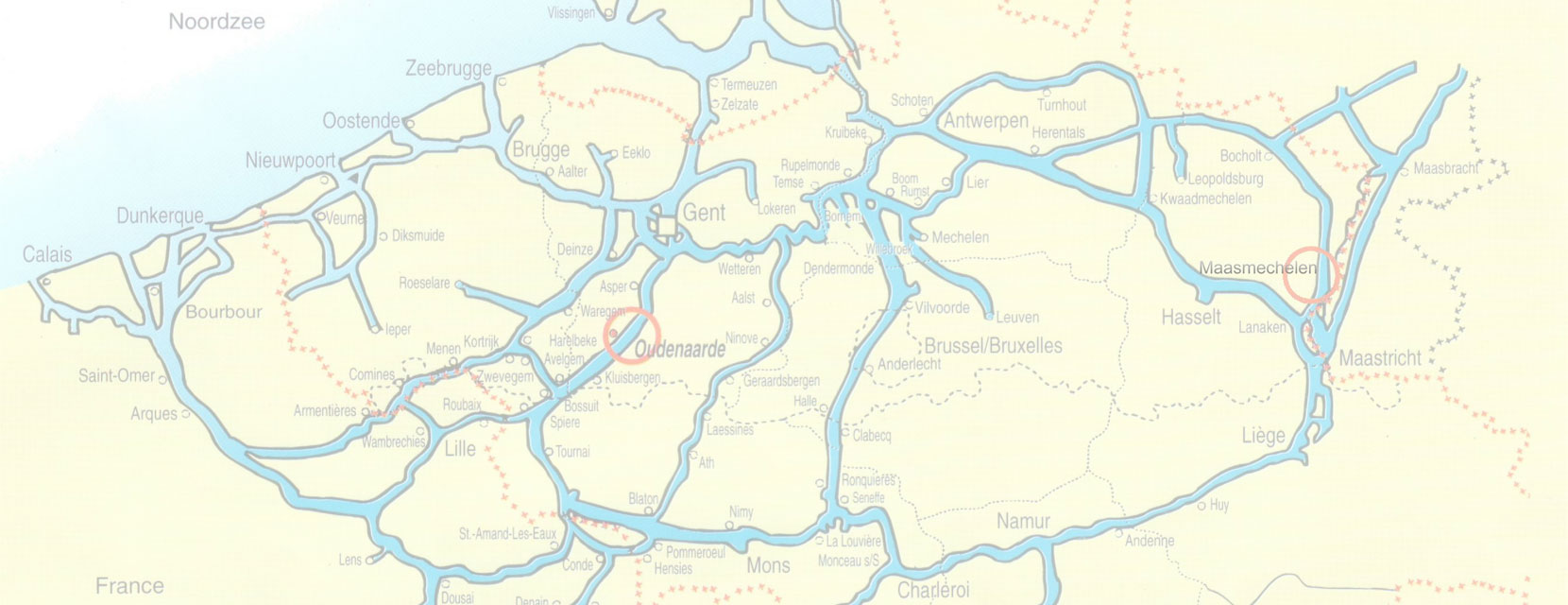How “Thijs” changed into “The 4 Vaargetijden”
Inspection of the hull of “The 4 Vaargetijden”.
In 1998 put on the slipway…
In the previous blog I already told about how Olga & Maurits found “Thijs” in the Netherlands. They saw their dream ship in it and negotiated with the owner, a retired skipper. Of course they also had to look under water to see if the ship was worth the money. The ship was therefore put dry on the slipway. All the growth and rust was sprayed off with a high pressure cleaner and then… …it was anxiously awaiting what the expert would say after inspection…
the hull of “De 4 Vaargetijden” was disapproved!
The expert saw it from afar… there were a lot of small and big holes in the hull! But he pulled out his measuring device to determine the plate thickness: there were holes, but the plate was still thick enough. Unfortunately the whole hull was such a swiss-cheese. So a big restoration would be necessary to be able to sail safely again! A serious setback for the old owner!
The skippers’ life as it was…
The old owner had sailed a lot of water with his ship “Thijs”. He had named his ship after his son. Their life on board was quite primitive in our modern eyes. They had 2 bedrooms with a double bed. But in 1 such bed Maurits didn’t even fit diagonally! There was a living room with room for 2 seats, a table and a heating stove. In the kitchen there was a fridge with a 2-burner gas stove and a large “pump stone” with pump, directly on the water tank. So there was only cold water! Was there no toilet? Yes there was! Open a sliding door and Olga just fitted on! But a connection to the water was missing. So we had to flush it with the wells (that’s a bucket with a rope, so you can “well” outboard water). Oh yes… also a wardrobe! You had to hang the clothes hangers a bit crosswise and 3 of them would fit in….
Transportation of cargo in bulk…
The hold was for the cargo. According to the papers, 189 tons could be loaded. Bearing in mind that the smallest freighter, the spits, can already load 360 tons and that they usually tie two of those ships together… …with over 700 tons, these days there’s a meagre existence for the skipper couple…
With the old owner the “Thijs” sailed mainly in the Maasvlakte with sand and gravel. This was dredged out of the water and dumped loose in the hold (= bulk transport). Via the waterway, the sand or gravel ended up directly at a concrete plant or a construction company. On the bollards at the front you can still see the thick grooves, souvenirs of the steel cables with which the Thijs was moored alongside the dredger!
Once retired, the skipper’s wife resolutely opted for a house ashore. Once she had tasted the modern comforts, of course she didn’t want to live on board anymore! But the skipper had trouble saying goodbye to his faithful ship. The “Thijs” stayed unused at the quay for over 20 years. If the ship had been taken out of the water every 5 years for the necessary maintenance of the hull, the ship would still be in excellent condition. Unfortunately, the skipper thought that maintenance was not necessary for a ship that was stationary… And so he got the disappointing news: his ship was ready for scrapping!
…but bought after careful consideration!
So we had to talk about the price and ask the shipyard for information about the cost of a thorough renovation. After a lot of calculations they came to a new agreement. The “Thijs” was bought! A tugboat brought it (or is it her?) to the shipyard of Maasmechelen… Very careful not to make any new holes in the hull. How happy Olga & Maurits, as new owners, were when their new acquisition was safely dry in the dry dock. Until there mission succeeded!
The metamorphosis from “Thijs” to “The 4 Vaargetijden”!
The ship stood there high and dry, on the bucks of the dry dock.
And so began a year of hard work! First the ship had to be emptied. This required a lot of sorting work and containers. Then all tar had to be removed from the hull. A patient job with scrapers, because all the sanding/grinding machines were sealed by the tar. Also the inside had to be scratched clean and then put in a preserving oil. What a mess it must have been! Would Boef, my predecessor, always have stayed spic & span, do you think?
Removing tar
The shipyard worked to renew the entire underwater hull. Such a plate is 8mm thick and really heavy! So the new owners were happy to leave that to the shipyard! The hull plates were removed one by one and replaced by nice new plates. This made the ship look more like a stranded whale: look the skeleton is visible!
… the interior
Everything was nicely outlined on the plan: “here comes the kitchen, here the storage room and here the 4 cabins…. then I am now in the living room” Olga saw it all! But it was 1 big empty space, without roof. The old wooden hatches had been removed. Also the floor had to come out. Even pickaxes were needed for that!
And then the real metamorphosis began!
While the shipyard took care of all the steelwork, the hull was given a nice new coat of paint on the outside. After more than 6 months of work, the ship was showing off its new colours. Everything on the hull was finished. The ship went afloat again! The further finishing would be done along the quay. Do you recognize the ship already?
To be continued…
It seems a lot like this on the outside, doesn’t it? But it’s still a long way from being a hotel ship!
In the next blog I’ll tell you about cabling, insulation, plumbing and much more. A bit like building a house, but not quite…. Curious? Then watch out for my next blog!
My dog’s feet aren’t used to that long writing… I’ve already switched a bit between port & starboard (left and right for you landlubbers), but now they really need to rest for a while.
See you next time!












